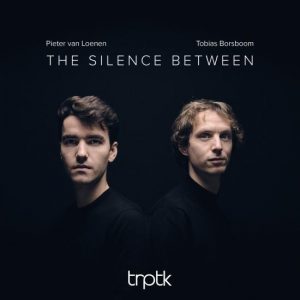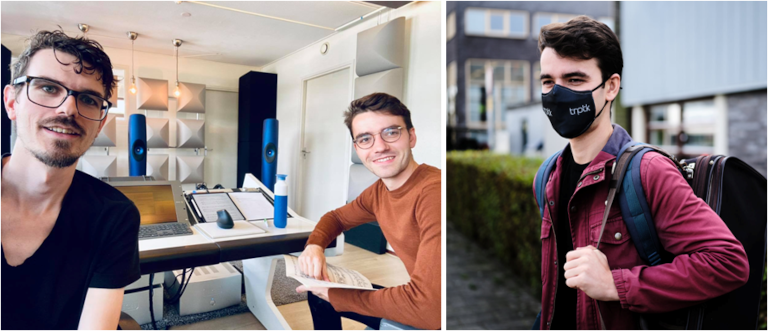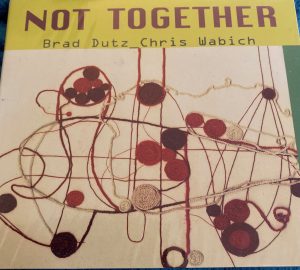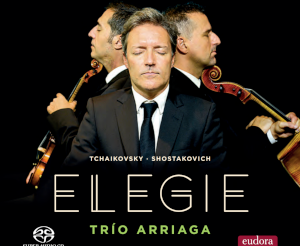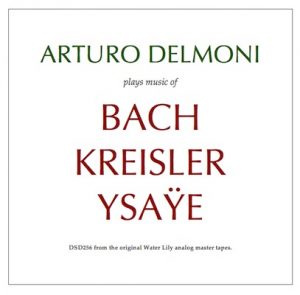The Silence Between, Pieter van Loenen, violin, and Tobias Borsboom, piano, TRPTK (2021, DSD256, DXD) HERE
The Silence Between is a marvelously transparent recording of superb performances of five engagingly melodic, tonal 20th century works. (Well, almost. The Debussy piece comes from 1890 but clearly looks forward to the next century.) In this brilliant recording, Pieter van Loenen, violin, and Tobias Borsboom, piano, demonstrate the magic that happens when two artists perform in complete sympathy with each other, meshing seamlessly in both ensemble and interpretive temperament.
And the recording quality provided by Brendon Heinst makes this yet another very satisfying release from TRPTK. Invariably there is something very special about Brendon's recordings—a purity of sound, an accuracy of timbre, an acoustic envelope that is captivatingly realistic, and an immediacy that enhances the musical experience while rarely sounding close-mic'd. All of these positive attributes are on display here. One can simply luxuriate in the sound quality.
The opening work, Stravinsky's Le Baiser de la fée (The Fairy's Kiss), is a pure delight. Van Loenen and Borsboom give us a nuanced, highly evocative performance, full of great delicacy and bloom. A divertimento after the original 1928 ballet, Stravinsky arranged this work in 1932 for piano and violin in collaboration with the American violinist Samuel Dushkin, who performed many of Stravinsky's works and for whom Stravinsky had composed his Violin Concerto. The Fairy's Kiss is a loving homage by Stravinsky to his favorite Russian composer, Tchaikovsky. In later years, Stravinsky claimed he could no longer remember "which music is Tchaikovsky's and which mine." Here Le Baiser de la fée receives a loving performance that lingers ever so slightly over the silences that add meaning and depth to this music.
The additional works by Takemitsu, Debussy, Schwertsik, Poulenc and are similarly accessible, melodic, and superbly well performed.
The album’s title The Silence Between sets the theme connecting all of these works, a theme inspired by a quote attributed to Claude Debussy: "The music is not in the notes, but in the silence between them."
Van Loenen and Borsboom identify three types of silence that inform their approach to these works and link them together. The first is the silence between original inspiration for the work—an memory, a poem, a person, a fairy tale—and the music in and of itself. The sources of inspiration have steered the composition in a certain direction, but the sources have not determined the music.
Summarizing from the liner notes:
Without knowledge of the story behind the pieces, the music evokes images for many listeners. If we are aware of these sources, they can offer a direction in which to look, they can give the music a certain color, as it were. Says Pieter, "We find that an interesting process. Knowing the story in such a piece can enrich the listening experience, but it can also have an impeding effect; that your own fantasy or feeling in a piece is slowed down."
And then there is a second silence. "The silence of that is about the moment of processing," says Pieter. "The composer creates the music while there was nothing yet. The silence is then like a blank canvas: an abstract space in which the music originates. He has written down notes from which the musician has to make music, from silence. The listener then again makes an interpretation of what he hears. There is silence in between that as well, if you notice the silence as space. This album is about that process, about interpretations of interpretations."
And then, finally, there is the silence in the score itself: the measures or beats in which a composer demands silence, a rest. Tobias believes that these "silences" should also be given more thought. "In fact, that is often very beneficial for a performance. The rests are a full part of the text. I think we should listen even better to the silences, there can be a lot of tension in it, and also a change."
"You can work towards the rests and in the repose you get the opportunity to let something happen," Pieter adds.
"But," writes Tobias, "it’s also about what happens between the notes, that which is not written down. What happens there?"
"And if you become aware that there is space on either side of every note, then something special can happen," says Pieter. "As musicians we have to fill the nothingness with expectation."
Takemitsu, Debussy, and Poulenc are well known to many listeners. But Kurt Schwertsik (born 1935) is perhaps a new name. It certainly is to me. And this introduction of composers new to me is an aspect of many TRPTK recordings that I find most enjoyable—delivering an opportunity to explore. Schwertsik's two-movement piece Unterwegs nach Heiligenstadt (2014) was commissioned to be performed as a companion work to Beethoven's Sixth Sonata for Violin and Piano. The title refers to the so-called Heiligenstädter Testament, a letter from Beethoven to his brothers, written in 1802, during a period of deep depression over his hearing loss.
"Schwertsik has, just like Stravinsky did in the Divertimento with Tchaikovsky, in fact scrambled Beethoven quotes," writes Pieter. "But I don’t think that this work is inextricably linked to Beethoven. Precisely when you separate it from that, you discover that it also works well on its own. Here, Schwertsik mixes Beethoven with other influences. It often looks neoclassical, sometimes romantic, sometimes even impressionistic, and thus comes to a very convincing own language. It’s just a very strong piece."
And indeed it is. A very nice new discovery for me, and I shall now be watching for more music by Kurt Schwertsik.
The concluding work on this album is the well loved Violin Sonata (1943) by Francis Poulenc. The sonata is in memory of the Spanish poet Federico García Lorca, who was executed by the nationalists during the Spanish Civil War in 1936. "In the second movement, a line of García Lorca is quoted," writes Tobias. "Suddenly it all sounds Spanish, with guitar-like writing in the violin." And the sonata has also gone through a moment of silence. Pieter: "The piece was written at the insistence of violinist Ginette Neveu. When she died in a plane crash in 1949, at the age of thirty, Poulenc adapted the piece. This gave it a new meaning; it became an in memoriam for both Lorca and Neveu."
Van Loenen's and Borsboom's approach to this music, to paying attention to the silences, adds immensely to their interpretations. The intentionality is palpable; it adds meaningfully to one's enjoyment of the works. All in all, these are intellectually challenging performances, full of exploration and the teasing out of subtleties that make these works fresh and engaging.
Such a pleasure to see such talented performers emerging on the classical music scene! Highly recommended.
Left Photo: Brendon Heinst, left, and Pieter van Loenen completing editing for The Silence Between. Right Photo: Pieter rocks a TRPTK face mask, reflecting another silence from the 2020-2021 pandemic.




